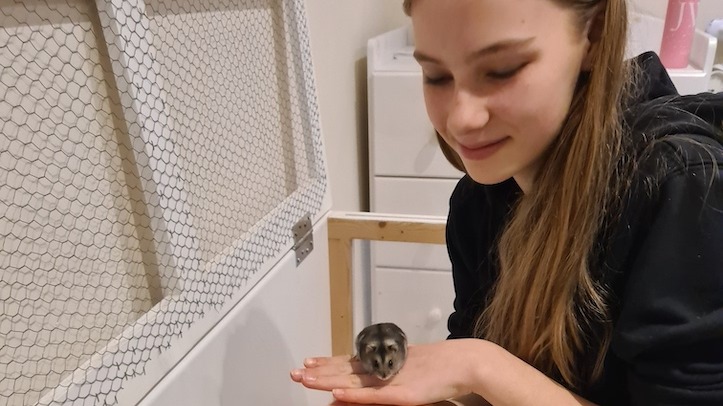UK Pet Food has revealed the results of its annual pet population survey, which shows a decline in the number of households owning a pet, as well as a fall in the numbers of pet cats and dogs, as the cost of living crisis takes hold.
However, the more difficult economic climate has also contributed to a 50% rise in the number of smaller pets such as rabbits, guinea pigs and hamsters as householders seek more affordable pets.
According to the survey, 57% of UK households (16.2m) look after a total of 38million pets. While the number of pets is up from 35million last year – a rise of 9% – there has been a decline in the proportion of households owning a pet, falling from 17.4m (62%) in 2022. The population of smaller pets now stands at five million – 1.7 million more than the previous year.
The dog and cat populations decreased by 6% during the year and now stand at 12 million and 11 million respectively. As many as 13% (3.7m households) admit to having relinquished a pet in 2022, with this figure rising to 28% among young owners aged 16-24 years old, with dogs and cats the most common pets to be relinquished. Following the pandemic pet-acquisition boom, 30% of young pet owners now admit that the cost-of-living crisis has made them rethink pet ownership, says the survey.
UK Pet Food commissions two sets of research to compile the annual study. The first is an online survey via Kantar / Soulor Consulting with 8,901 respondents, providing detail on the pet population, completed in January 2023. Additional qualitative data was also completed in January 2023 with a sample size of 2,559.
Nicole Paley of UK Pet Food said: “World events have had a massive impact on lifestyles over the last few years. Throughout the pandemic, we saw an increase in people adding a pet to their family as they sought the amazing companionship a pet can bring. Today, owners are clearly impacted by the cost of living and sadly relinquishment figures are high.
“The small pet population is on the up suggesting that people believe they are more manageable and less expensive to keep. Although pets bring huge joy to a household, they also come with a huge responsibility and it is so important to understand the care and cost implications – whatever the size of your pet.”
She continued: “Startlingly, we discovered that only 29% of people considered the cost when they got a pet. Almost one fifth (18%) admitted that a pet was more expensive than they had considered. This figure rises to 23% among the youngest owners (16-24) and families are also impacted with 15% of those with children finding it tough.”
UK Pet Food’s research confirms that around 20% of owners have had to make cuts on pet insurance, vet visits and pet food. This rises to over one quarter among the younger demographic.
Paley added: “There is a need to raise awareness amongst potential owners on the financial responsibilities of pet ownership – whilst supporting all the amazing owners who are struggling.
“In times of crisis, many pet owners do not have a choice. This year, UK Pet Food wanted to support our colleagues in the welfare sector by analysing relinquishment and we are working closely with the CFSG (Canine & Feline Sector Group) to identify what the pet care sector can do to help.”
UK pet population 2023 and %age ownership by household
Dogs 12 million (31%)
Cats 11 million (26%)
Rabbits 1.5 million (2.8%)
Indoor birds 1.3 million (2.3%)
Guinea pigs 1 million (1.8%)
Domestic fowl 1 million (1.3%)
Hamsters 900,000 (2.1%)
Tortoises/turtles 900,000 (1.8%)
Lizards 800,000 (1.6%)
Snakes 700,000 (1.6%)
Source: UK Pet Food



